LDNIO DL-AC50 usb 1A
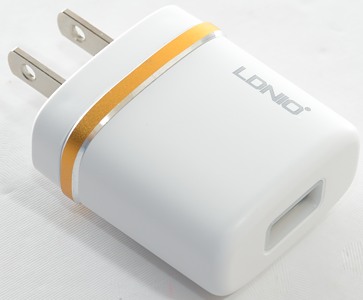
Official specifications:
- Input: 100-240V AC,50/60Hz
- Output: DC 5V 1A
- Weight: 50g
- Compatible: USB 2.0 Power Plug.
I bought it from banggood.com, this is not a super cheap model, but cost a bit more. Is this enough to make it safe?

![]()

![]()
This charger arrived in a retail package.

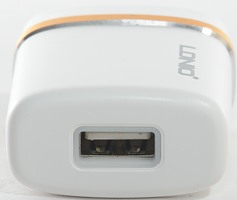
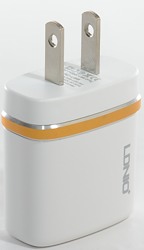
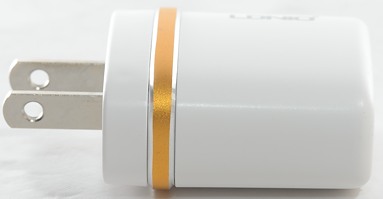
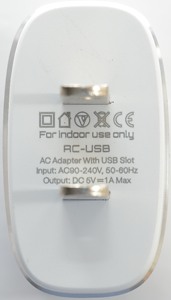
Measurements
- Idle power is 0.2 watt
- Output is coded as Apple 1A
- USB connector has a hidden blue led.
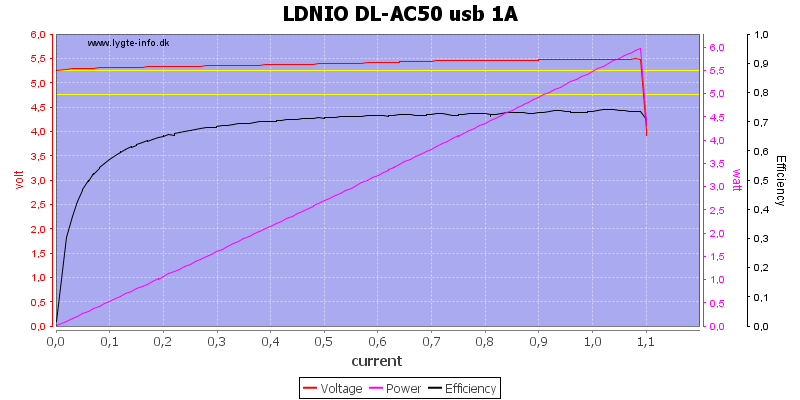
Output voltage start out a bit high and will slowly increase with load, the charger has some sort of protection at 1.1A.
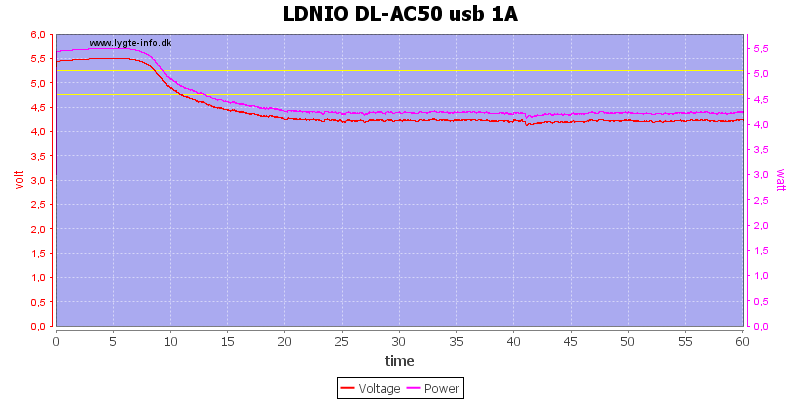
The charger cannot deliver 1A for more than about 7 minutes, not very good (IR photos are from this test).
%20load%20test.png)
Reducing the current to 0.9A helps, now it can deliver for 1 hour.
The temperature photos below are taken between 30 minutes and 60 minutes into the 1 hour test.
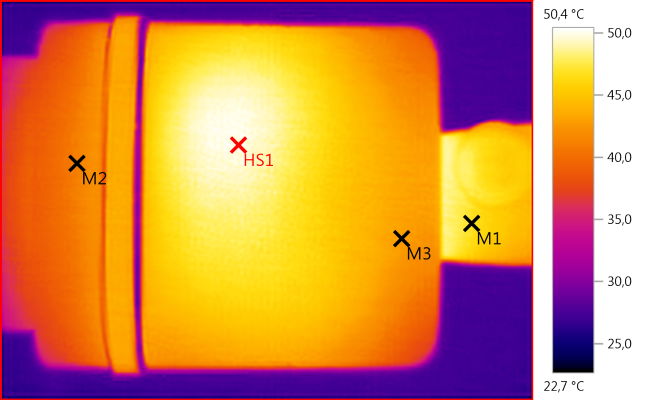
M1: 46,7°C, M2: 41,0°C, M3: 43,1°C, HS1: 50,4°C
HS1 is the transformer.
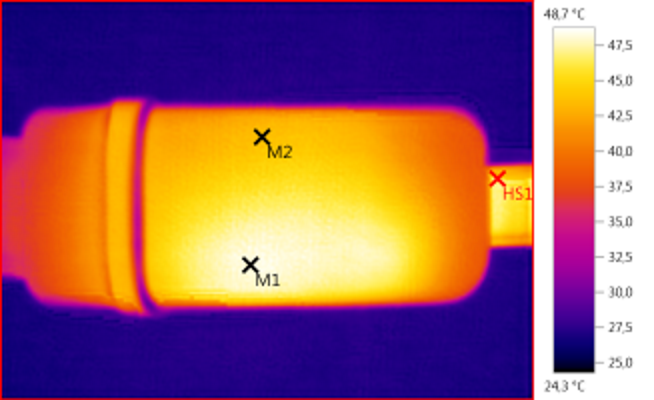
M1: 48,3°C, M2: 43,6°C, HS1: 48,7°C

M1: 45,7°C, M2: 49,3°C, HS1: 58,9°C
HS1 is the rectifier diode.
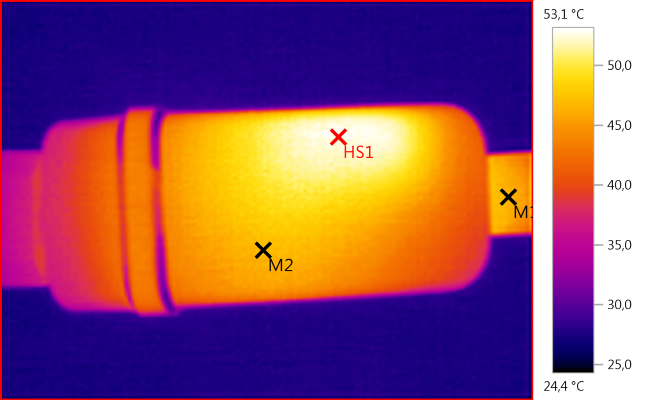
M1: 46,6°C, M2: 46,7°C, HS1: 53,1°C

M1: 48,8°C, M2: 39,7°C, HS1: 60,3°C

There is a lot of noise at 0.5A with 170mV rms and 990mVpp.

The noise is about the same at 1A with 180mV rms and 950mVpp.
Tear down

The wires from the plug is not soldered directly in the circuit board.
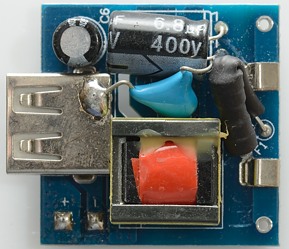
This circuit board is very compact with the safety capacitor mounted on top of everything else. It does have a fuse on the input.
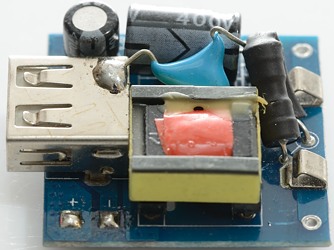
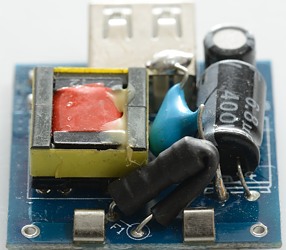
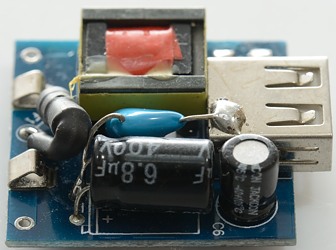
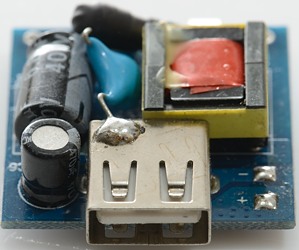

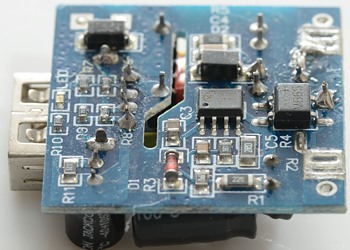
On the bottom the rectifier bridge and the switcher controller can be seen. The rectifier diode (D3) is close to the usb connector.
Notice the blue led (LED) below the usb connector.
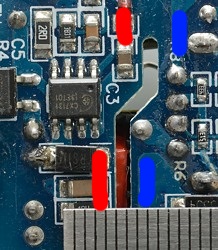
The safety is always interesting with a compact construction. When using slots in the circuit board the distance for air can be used, i.e. 4 mm, but here there is only 3mm. Next problem is where the slot ends, there is not much extra distance between the tracks, only about 4 mm.
These distances would have been fine for 120VAC, but the charger is marked 90-240VAC, i.e. it must be safe at 240VAC.
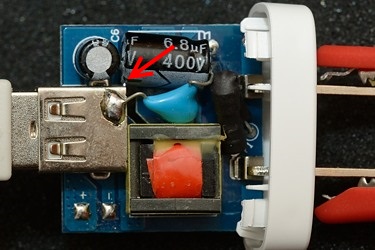
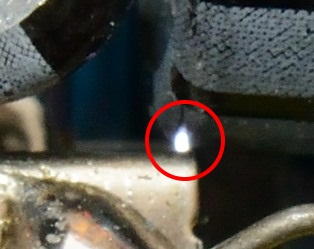
When testing with 2500 volt I got a spark and it is possible to see where after I disassembled the charger. The isolation on the mains capacitor is not good enough to withstand high voltages (It is not supposed to be)!
The charger failed isolation test with 2500 volt and 5000 volt, this makes the charger dangerous to use anywhere in the world.
Conclusion
The charger has a lot of noise, cannot deliver rated current and is not safe: Stay away.
Notes
Index of all tested USB power supplies/chargers
Read more about how I test USB power supplies/charger